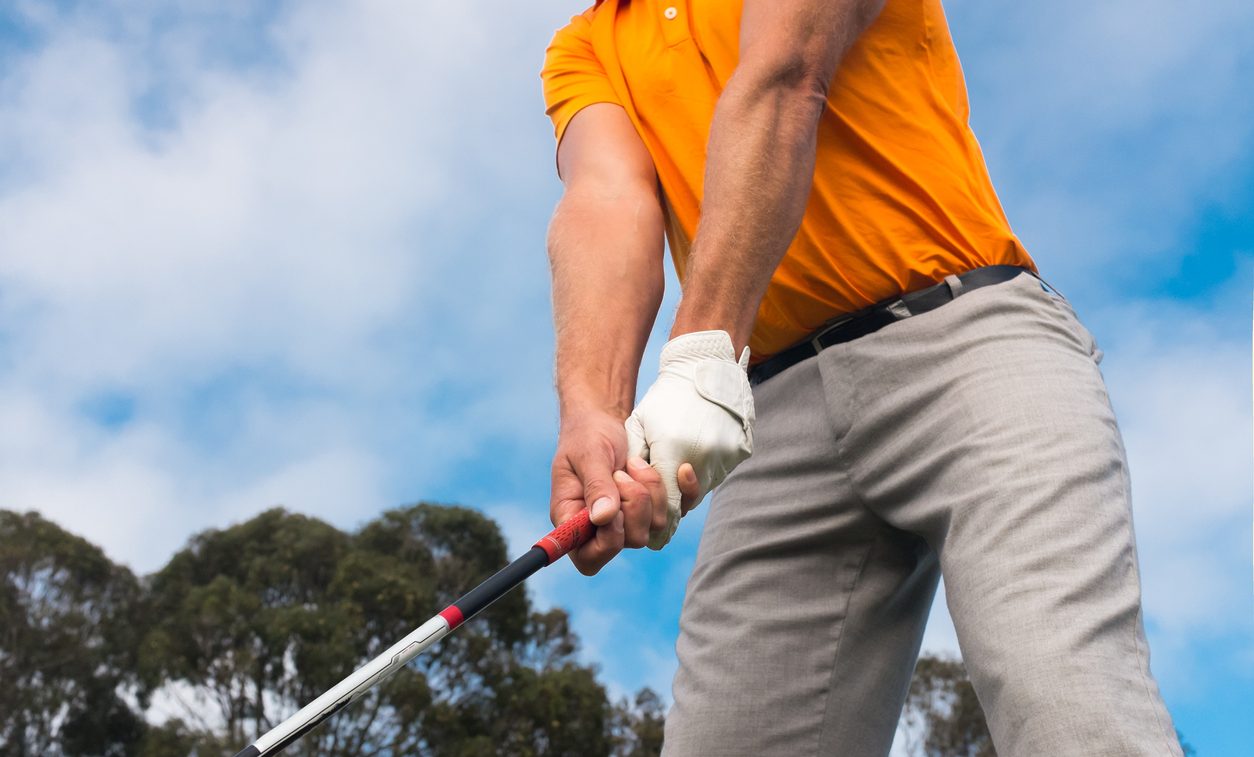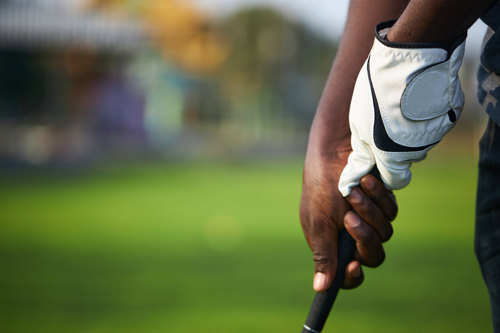How to hold a golf club
17 July 2025

As with many sports, technique is everything when it comes to golf. For an advanced player with a low handicap, there are all kinds of factors to consider. But, before all of that, you need to master the basics, and there’s nothing more basic than learning how to hold a golf club for beginners.
Simple, it may seem, but learning how to do this involves real intricacies. For example, you’ll find yourself holding a putter differently than a wedge. You’ll have to learn how tight to grip, and most importantly, you’ll have to learn why this all matters.
So, if you want to improve your grip, look no further than this guide on how to properly hold a golf club. We’ll look at how to do it for both right-handers and left-handers, and the different grips you need for each kind of club.
Why do I need to learn how to hold a golf club correctly?
First things first, let’s address why this is all important. The reality is, if you want the ball to go where you intend, you’re going to have to hold the club in the right way.
Consistency is as important as any other skill in golf, and that all starts with your grip of the club. If you’re not treating the club appropriately, you can’t expect to achieve your desired results on a regular basis.
With every swing, you need control to direct the ball where you want it to go, and power to get it there. Plus, you want to ensure you’re not hurting your wrists or creating bad habits in the process. Once you’ve learnt how to hold a golf club properly, you can begin to master these facets of the game.
How to hold your club
There are differences for every club and every golfer, but as a general rule, this is what you need to do when first holding your club.
- If you’re right-handed, grab the club with your left hand. The fingers of that hand should be stretched, and the club handle lined up with your left palm. The handle will appear in a diagonal line across those fingers
- From there, close your grip with your palm resting on the top of the club. Your palm shouldn’t cover it entirely, as you still want to be able to see the very top of the handle
- Now, turn your hand clockwise until you can see two knuckles on that left hand
- Finally, put your right hand over your left thumb, covering it completely, and close your grip
You should now be able to see a ‘V’ shape created by your thumb and forefinger directed towards your chest.
This is known as a neutral grip, which is ideal for most golfers. However, a strong grip created by turning your right hand even more so that the ‘V’ shape is pointed more towards your shoulder, is ideal if you tend to slice the ball.
On the flip side, if you find yourself hooking the ball, a weak grip may be preferred, whereby you rotate your hands more to the left and the ‘V’ shape is aimed closer to your chin.
Working out which strength of grip suits you best takes practice, so it’s best to experiment with each to see where your preference lies.
And, of course, if you’re left-handed, the process is the same, just with your right hand first as opposed to your left. Luckily, golf is a sport that accommodates lefties with clubs specifically designed for left-handed use.
How to grip a golf club: the three types of grips
Beyond the strength of your grip, there are three main ways to grip a golf club, and they’re all about your fingers. Each has its advantages and disadvantages.
1. 10-finger grip
If you’re a beginner, this is the best place to start. As the name suggests, the 10-finger grip involves all 10 fingers touching the club.
To do this, place your left hand towards the top of the club and your right below it (if you’re left-handed, do the opposite). Make sure your hands are touching so there is no gap, and ensure your left thumb is pointed up and not wrapped around the shaft.
Advantages
The 10-finger grip is also known as the baseball grip because of its similarity to holding a baseball bat, and for that reason, it feels natural if you’ve never held a club before. It’s also the easiest technique. The added wrist flexibility and 10 points of contact also mean your swing allows for a lot of power when hitting the ball.
Disadvantages
This wrist flexibility has its downsides, as it limits control and can lead to bad habits. You shouldn’t rely on your wrists for power, as this should be created by the whole swing. Additionally, your hands may not necessarily work in tandem. This grip doesn’t provide the same solidity as others and can create an imbalance of power, which results in a lower-quality shot.
There’s a reason the 10-finger grip is primarily used by beginners and not pros: it’s a good start, but not the be-all and end-all.
2. Overlapping grip
This is the most common grip and is sometimes referred to as the Vardon Grip, thanks to its popularisation by legendary golfer Harry Vardon.
Start with the 10-finger grip before moving the little finger of your right hand and resting it between the index and middle finger of your left hand. Your left thumb should point down the club, and there still shouldn’t be a gap between your hands.
Advantages
The beauty of this grip is that its advantages hugely outweigh the disadvantages. Your hands are working together better than in a 10-finger grip because of the added link from your little finger, so there’s an element of control you otherwise wouldn’t have. Additionally, the fact that most professionals use this swing means you can imitate their swings and model your own based on them.
Disadvantages
If you have smaller hands, you may find it a little awkward, but that’s more or less the only downside. This is a foolproof grip.
3. Interlocking grip
This way of holding a golf club goes one step further than the overlapping grip. The big difference between this and the previous grip, though, is that the little finger on the left hand is placed entirely between the index and middle fingers of the right as opposed to simply resting there. As a result, the grip is even more secure.
Advantages
Perhaps the biggest advantage of this grip is that both hands are essentially now functioning as one. There is no room for either hand to do its own thing, and you’re now about as close as you can possibly be to being at one with the club. There’s also an added element of fluidity that comes with the interlocking grip, given that you now don’t need to grip the club quite as tightly because of all 10 digits being on the club while your hands are also secure.
Disadvantages
For bigger hands, there can be some awkwardness. Your wrists won’t be as free, which could limit power. This style will also take some getting used to, and it will likely feel quite unnatural at first.
That said, this is the grip used by superstars like Tiger Woods and Rory McIlroy, so for the more advanced player, that’s about as strong a sell as you could get.
At the end of the day, it’s up to you which grip you choose. Try each and see what works for you. There’s no wrong answer.
Holding each type of club

When it comes to how to hold a golf club, the answer will also differ based on which type of club you’re using. Let’s look at each club and the preferred grip.
Woods
For a wood, such as a driver, you need to ensure your grip is relaxed. If you hold the club too tightly, you’ll restrict movement and sacrifice both power and precision.
Don’t hold it too loosely, though. Too much slack in the wrists can result in a shot that lacks the necessary power. If a one is the loosest grip you can muster and a 10 the strongest, aim for a five or six.
Furthermore, inconsistency and a lack of distance can be brought about by holding the club too far down the shaft. Make sure your hands are towards the top of the handle but not entirely covering it.
Irons & Hybrids
It’s very important that your fingers do most of the gripping when holding an iron. Applying too much pressure with the palm can create tension in the shoulders and can even damage your gloves. In addition to that, it will have predictable effects on your swing in terms of limiting speed and power.
Wedges
When it comes to a wedge, ensure your ‘V’ is pointed towards your right shoulder (or left if you’re left-handed) and grip the club a little firmer than you would a wood or driver, but still not overly tight. This will allow you to keep as much control as possible in your swing.
Putters
It’s a little different when it comes to putters, as there are various grips to choose from. The most common is the reverse overlap grip, where your right hand is placed below your left and your hands are linked by the left index finger wrapping around the fingers of the right hand. Your left thumb should remain flat on the top of the grip. This is to ensure you enhance direction and control.
Follow these tips and experiment with the various grips, and you’ll have a much better understanding of how to hold a golf club.
Specialist golf insurance with Golf Care
Once you know how to hold your clubs, you may want to consider protecting them and yourself with specialist golf insurance.
With Golf Care, policies can include Equipment Cover up to £7,500, Public Liability of up to £10m, and Personal Accident Cover up to £50,000. Get a quote online today.
Please note the information provided on this page should not be taken as advice and has been written as a matter of opinion. For more on insurance cover and policy wording, see our homepage.
